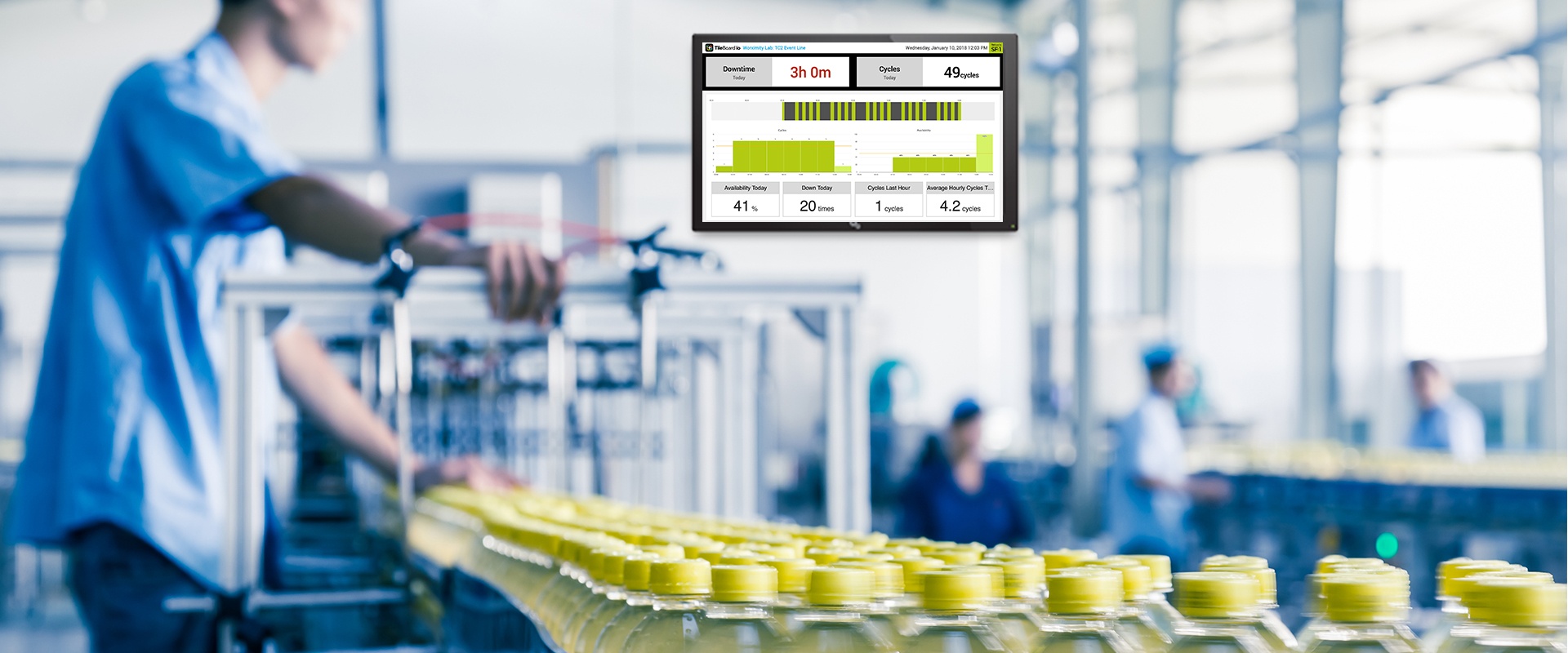Plant floors are becoming increasingly complex environments, where managers thirst for higher efficiency and productivity of their equipment. In an effort to make plant floors more efficient, data needs to be collected from many different sources, integrated and analyzed under a centralized platform.
More businesses are beginning to implement industrial IoT technologies in order to make the data collection and analysis process easier and more efficient. One of the things that implementing IIoT enables a plant to achieve is real-time data collection.
How it works
Automatic data collection involves placing sensors, valves and other plant-floor technologies on your equipment to track the operational efficiency of your machines in real time.
Data on different aspects of your equipment’s operations is collected in real time and sent to a cloud. Software programs are then used to compile data from various machines around the plant, the data is analyzed according to relevant KPIs, and plant managers and other relevant personnel can view performance results.
Real-time data collection benefits your plant in many ways, most notably by increasing operational efficiency while reducing downtime and driving up productivity.
Here are 7 reasons why you need to begin collecting data in real time in your factory:
1. Improved visibility of your plant operations
Have you ever wanted to get a quick overview of how your plant is operating at any given moment? Collecting data in real time makes this possible. With information about your equipment being constantly monitored and integrated using a common platform (such as the cloud), you can get a precise snapshot of what is going on in the factory at any given time.
This makes it easier for the management team to make faster and better decisions that are backed by concrete data. In addition, software applications that are part of IIoT technologies are very efficient at aggregating and analyzing data. You can therefore pick up on potential future problems such as signs of downtime and equipment breakdown even before they happen.
2. Higher quality data that facilitates better decision-making
Real-time data collection means you can get accurate and higher quality data for your plant. The use of IIoT devices to collect data from machines is much more efficient than manual data collection processes. Manual data collection is slower, prone to mistakes, and harder to compile using a common platform.
In fact, a survey carried out by the Economist Intelligence Unit found that 86% of manufacturers who implemented the IIoT to collect and analyze data reported major increases in productivity and high-quality data.
Not only is automated data collection more efficient, it is also more trustworthy. It is less likely to be interfered with by biased parties, and the resulting decisions made for the plant are more objective.
3. Easy to set up
The IIoT has made real-time data collection much easier to achieve for plants. In most cases, all you need to do is install a series of sensors and valves on your equipment. These devices will work continuously to monitor the health of your machines, while collecting critical data on performance indicators such as temperature and flow pressure, thereby ensuring that your plant operates more efficiently.
4. Flexibility to adapt to your production needs
Your plant’s needs may vary considerably from day to day. There are days when you may want to schedule overtime for employees in case your daily targets are not met. You may also need to increase the speed on a specific production line when there’s a spike in demand by customers. Whatever the reason, flexibility should be at the heart of your operations.
Collecting data in real time allows you to continuously maintain an overall view of how the plant is operating, and to make necessary changes in order to match productivity with daily targets and goals. Real-time data always keeps you one step ahead, giving you the flexibility to make key decisions to foresee downtime and problems caused by backlogs.
5. Real-time data collection increases the productivity of your employees
In order for your plant to become more efficient, your employees must become more productive. Automated data collection processes allow employees who were previously bogged down with manual data collection responsibilities to refocus their skills and efforts towards other crucial areas of the plant.
To increase your employees’ productivity, you need to link their job functions with their strengths as well as with key areas of focus for your business. With real-time data and increased automation strategies, your employees will now have the time to work on added-value tasks, while coming up with ideas to make your operations more efficient and profitable.
6. Lower costs
Implementing IIoT technologies to collect real-time data leads to lower costs for your plant operations. Automated processes cut down on labor and equipment maintenance costs. Also, with KPIs being constantly monitored, you can implement predictive maintenance measures that save on unnecessary material costs. Automation also tends to be “greener”, reducing the amount of paper used in your plant, along with the associated costs.
Time clock modules can be used to provide insights into employee work hours, and to analyze how their efficiency fluctuates during the course of the day.
7. Better inventory management
Are you incurring high inventory costs? Real-time data can be applied to how you track and manage your inventory so you can improve efficiency. For example, by using barcodes to keep track of items (as opposed to manual processes), you can anticipate how much of each item your plant will need on any given day.
You can therefore coordinate with suppliers to deliver inventory only when it is needed, i.e., “just in time”. Sensors can be used in the plant to send notification signals directly to supplier systems when inventory is low. In this way, the production plant does not need to incur storage costs for unused inventory.

















